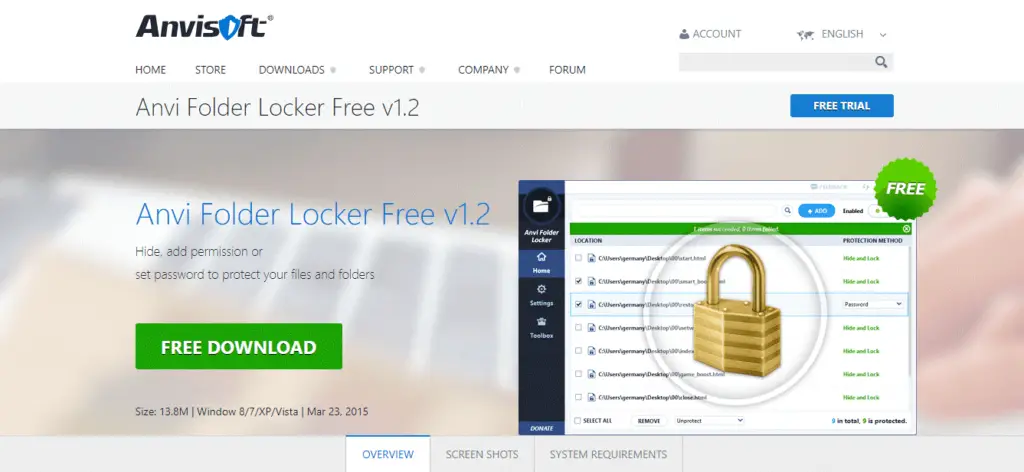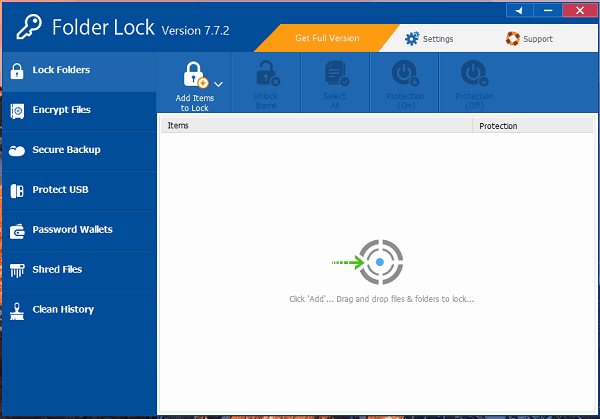

- #BEST FOLDER LOCK SOFTWARE FOR WINDOWS 10 FULL#
- #BEST FOLDER LOCK SOFTWARE FOR WINDOWS 10 PRO#
- #BEST FOLDER LOCK SOFTWARE FOR WINDOWS 10 PC#
But do mind the Admin account clause I mentioned earlier. This way someone will not get suspicious as why they are being given new account to use. setting the permissions for the files in the new account so the files cannot be accessed in the original account. The above process can also be done in reverse i.e. For added effect give your folder some technical name like Windows System files or Admin Files to make it look like they are really system files. Now if someone tries to access those files they will get an Access denied error.
#BEST FOLDER LOCK SOFTWARE FOR WINDOWS 10 FULL#
Step 4: Once you have added the concerned account, check the Full Control box under Deny column and finally click Apply to save. Select the account and click on OK, in both the previous windows to return to Permissions window. If the account doesn’t show up, click on Advanced… > Find Now, which list all accounts present on the PC. One more window will open in which you have to enter the exact account name and then click on Check Names. Step 3: In the new window click on the Add… button to add the new user to the list. Right-click on the folder > Properties > Security tab, click on the edit button. This will make managing permissions for several files easy.

Step 2: Once you have the new account set up, pool all your files and folder in one single folder. Step 1: Go to Control Panel > User Accounts, click on Manage another account > Add someone else to this PC. Make sure that the new account you’re creating is not an admin account or else this whole process will be futile as an admin account can override all permissions irrespective of file or folder.
#BEST FOLDER LOCK SOFTWARE FOR WINDOWS 10 PC#
If someone wants to use your PC or want to borrow your laptop you can just create a new account for them and change the permissions on the files and folders you don’t them to view. Learn more about encryption for Mac, iOS and Android. You can add other users who can access the file by clicking the Details button as shown in the screengrab above and clicking on Add.Ĭool Tip: Encryption is not only for Windows, it’s important on all platforms. Step 2: Click on OK and the filename will turn green or a lock symbol will appear depending on Windows version. Right-click on the file > Properties > Advanced button under General tab > check the Encrypt contents to secure data. Step 1: Any file or folder can be encrypted in Windows, provided the above conditions are satisfied. Now let’s see what are the basic steps to encrypt a file or folder in Windows.
#BEST FOLDER LOCK SOFTWARE FOR WINDOWS 10 PRO#
Also, there are some limitations of encryption, it is only available to Pro edition users & will work only on NTFS partition. But in case, if someone physically steals your drive or makes a new account on your PC, he/she will be unable to open them.

So whenever you log into to your account all the encrypted files are decrypted on the fly and available in the normal state. So one might wonder what it is the use of Encryption then? The answer is that the encryption key (generated when you encrypt something for the first time) is associated with your account, more specifically to your password. If you encrypt a file/folder in Windows, you can easily open it, transfer it or mail it and it will still open on the receiving end. Locking a File in Windowsīefore we move on to the various methods, it’s important to understand how encryption works in Windows. So today we will see four ways in which you can cleverly hide your stuff natively in Windows without any external help (somewhat). But what if you’re stuck in a similar situation without access to the internet? There is popular script floating around the internet which makes it look like you’re actually locking a folder, but in reality, it just hides-unhides the folder and is not an effective method at all. Fortunately, I had an internet connection so I downloaded a simple app for the purpose and handed over the drive knowing my personal stuff was safe. Turns out there is no way to do that without the help of an external app. So I fired up Google to find some quick ways to lock up the files on Windows.

Of course, I had the option of telling the true reason but didn’t want to seem rude. I was little uneasy as it contained some personal stuff which I was not comfortable sharing. Recently my boss asked me to lend him my external hard disk (for reasons which can’t be explained).


 0 kommentar(er)
0 kommentar(er)
